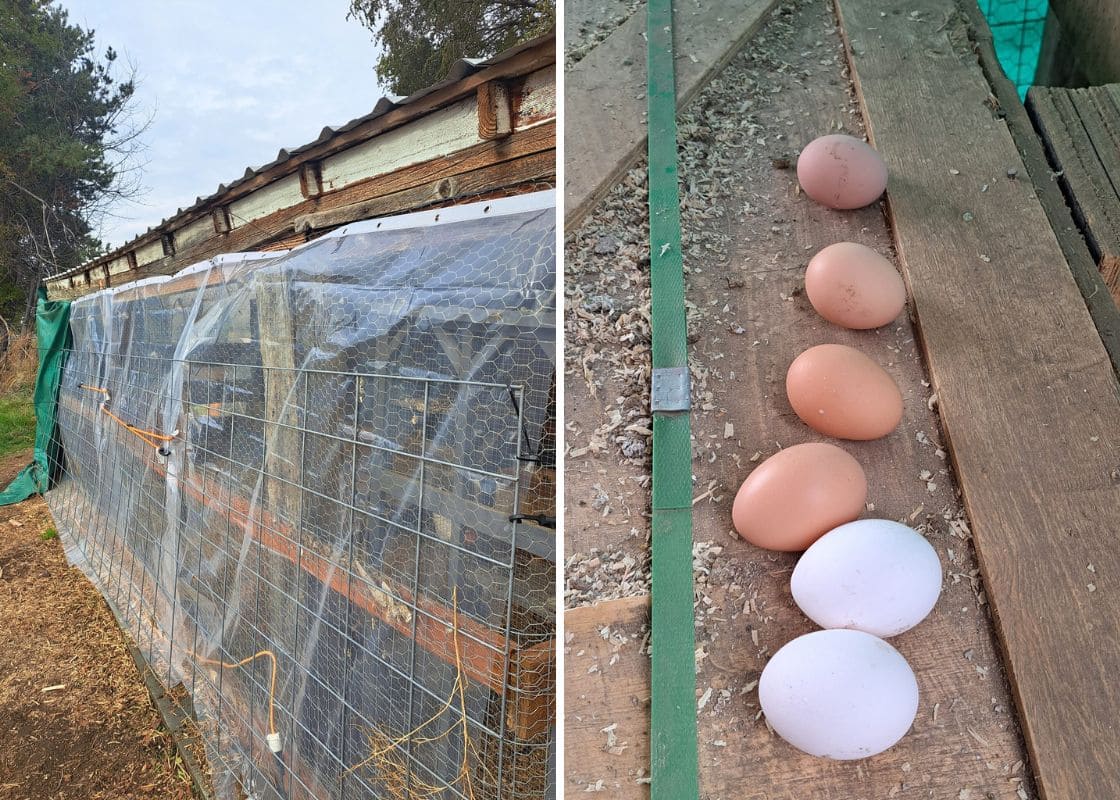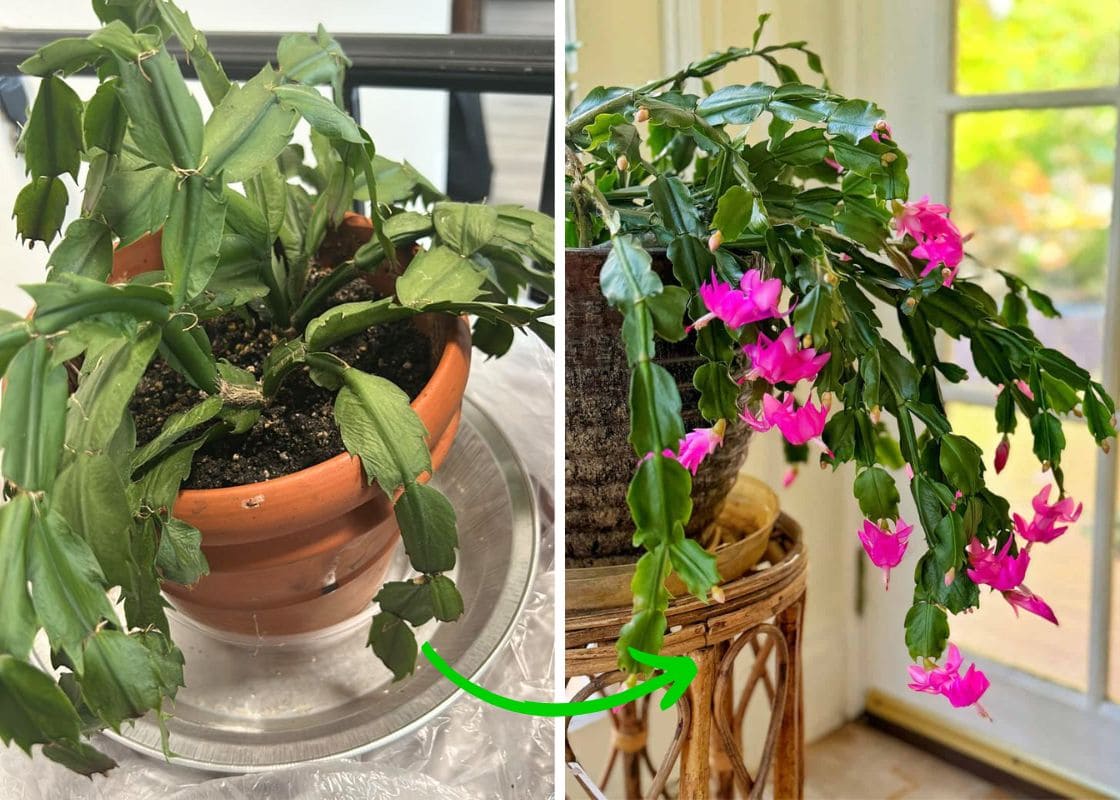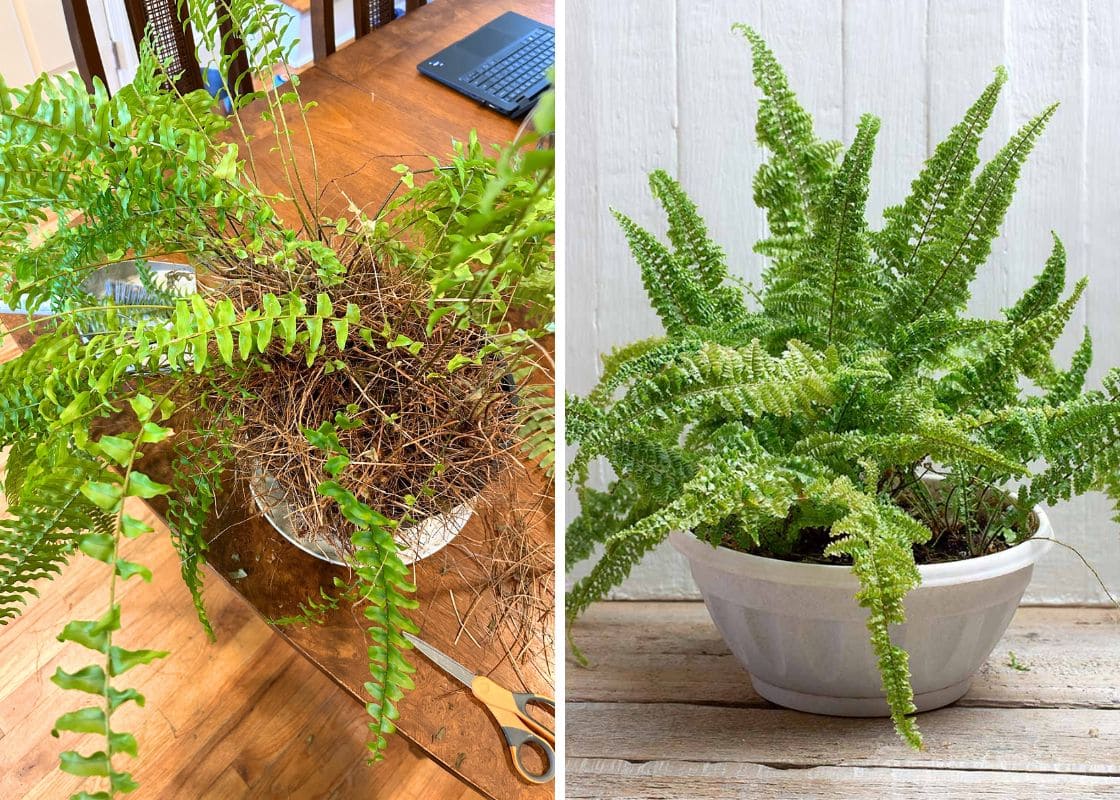Companion planting is one of the simplest, most effective ways to build a healthier orchard without relying on harsh chemicals.
Apple trees benefit tremendously from having the right plants growing at their base as plants that attract pollinators, deter destructive insects, enrich the soil, and support stronger fruit production.
Whether you’re tending a single backyard apple tree or managing an entire homestead orchard, adding these companion plants can make a noticeable difference in both yield and tree health.
Below you’ll find the top apple tree companions.
1. Borage (Borago officinalis) – Pollination support, soil improvement

Borage is considered one of the top companion plants for apple trees because pollinators love it.
Research shows that borage attracts bees more effectively than many common garden flowers, improving pollination and helping your apple trees set more fruit.
Its deep taproot also mines nutrients from lower soil layers and returns them to the surface as the plant decomposes.
Many orchard growers note that borage may help reduce codling moth issues by encouraging strong beneficial insect populations.
2. Yarrow (Achillea millefolium) – Attracting beneficial insects, moisture regulation

Yarrow is a powerhouse for beneficial insects such as ladybugs, lacewings, hoverflies, and parasitic wasps.
These natural predators that disrupt aphids, codling moth larvae, scale insects, and other common apple tree pests.
Its feathery leaves and shallow root system also help regulate soil moisture while improving structure.
Because yarrow spreads gently, it can fill in the space beneath your tree without competing aggressively for nutrients.
3. Chives (Allium schoenoprasum) – Pest repellent, disease prevention

Chives belong to the allium family, known for naturally deterring pests such as aphids, mites, and even deer.
Many gardeners plant chives near apple trees because their strong sulfur compounds may help reduce the incidence of apple scab and powdery mildew.
Chives also produce attractive purple blooms that draw bees during the early season.
4. Artemisia (Wormwood, Artemisia absinthium) – Pest suppression, orchard floor protection
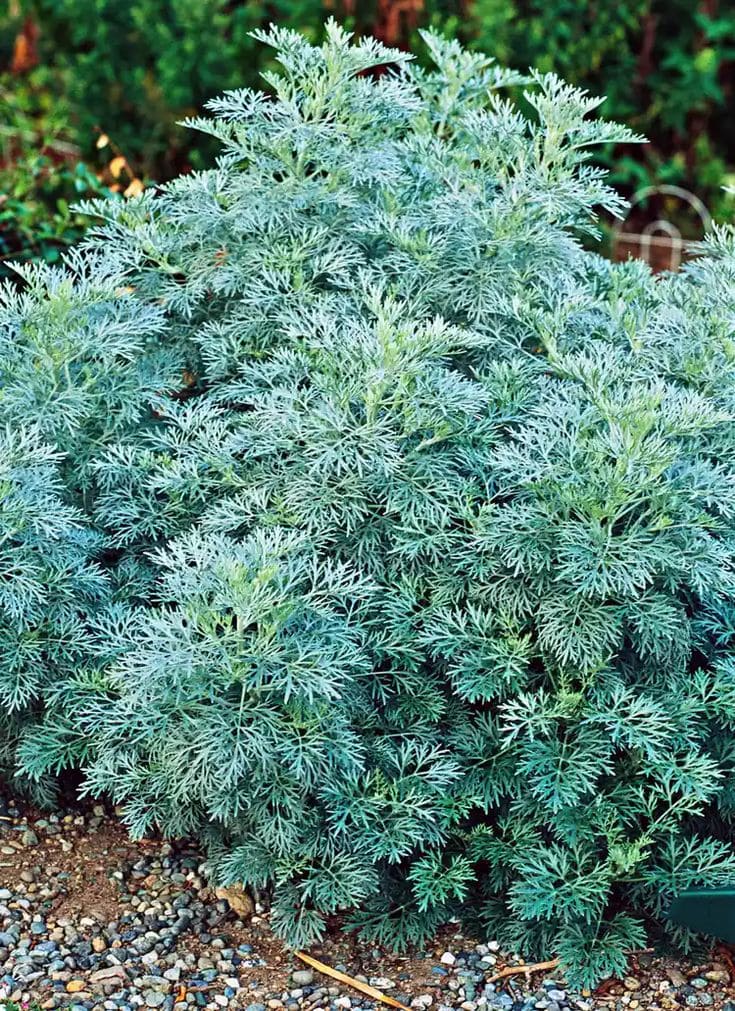
Artemisia releases aromatic compounds that discourage a range of pests, especially borers, flea beetles, and certain moth species.
Use it sparingly, as its allelopathic properties may inhibit some nearby plants. Therefore, placing it a few feet away from the trunk or using it on the surrounding orchard perimeter works best.
Its silver foliage adds visual contrast while helping maintain a cleaner orchard floor by deterring unwanted insects.
5. Marigolds (Tagetes spp.) – Soil health, root protection

Marigolds are famous for producing naturally occurring nematicides that help suppress harmful root-knot nematodes. This is particularly valuable for young apple trees, which are vulnerable to root stress.
Their bright flowers invite pollinators and predatory insects, contributing to a more balanced orchard ecosystem.
Marigolds also offer a soft, low-growing layer that fills in bare soil and helps reduce weed pressure.
6. Nasturtium (Tropaeolum majus) – Aphid control, natural groundcover
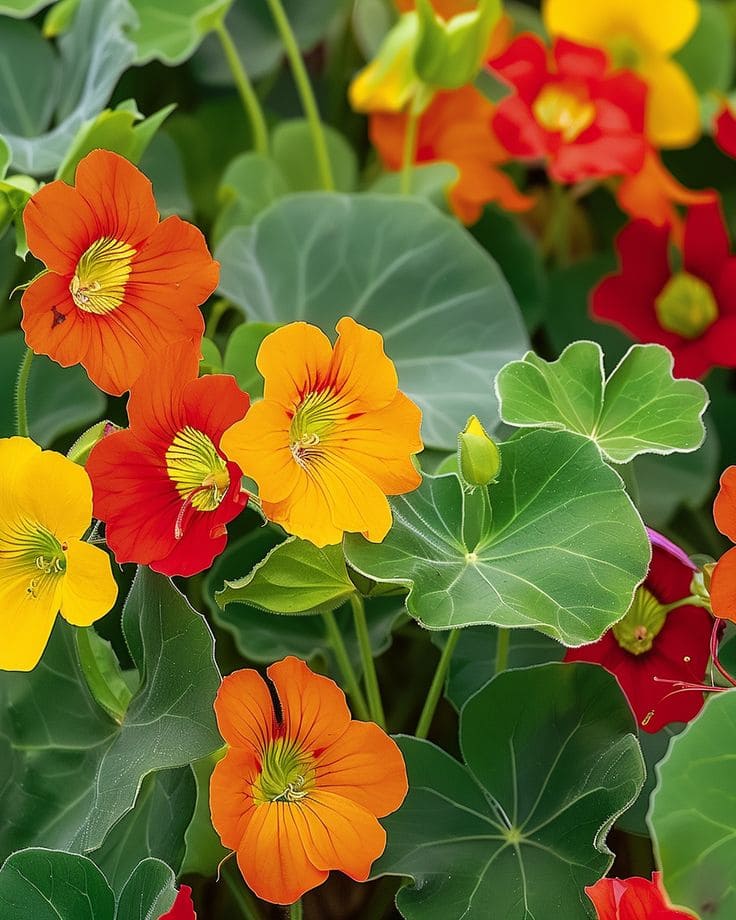
Nasturtiums act as a trap crop, meaning aphids are more likely to gather on them instead of your apple tree.
Their sprawling vines help shade the soil, maintain moisture, and keep weeds down.
Pollinators and hummingbirds also love their brightly colored flowers, increasing orchard biodiversity.
7. Additional Good Companions (Optional)
Except for the above plants, apple trees also benefit from:
- Dill (beneficial insect attractor)
- Calendula (aphid control + pollinator support)
- Comfrey (nutrient accumulator + mulch plant)
- Clover (nitrogen fixer + living mulch)
How to Arrange Companion Plants Around Apple Trees
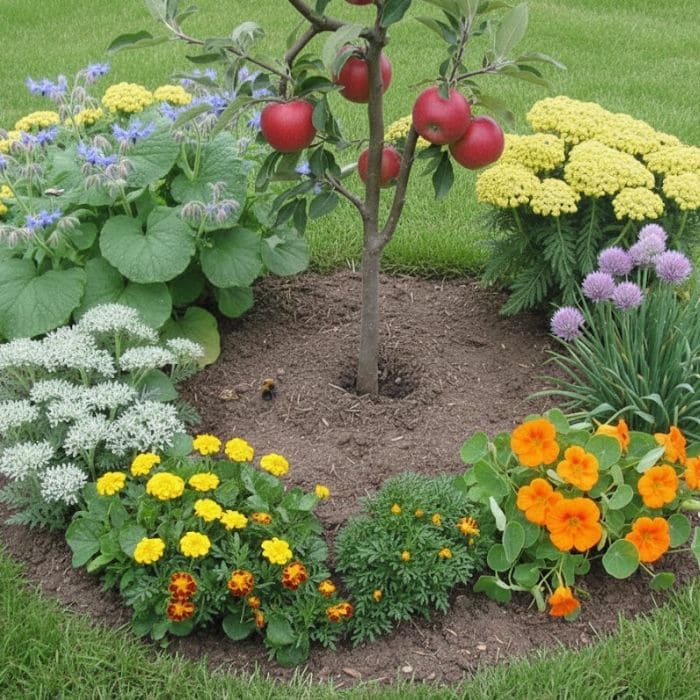
Designing a companion-planting circle around an apple tree works best when you think in gentle layers rather than strict rows.
Apple trees don’t like anything crowding their base, so leaving about a foot of bare soil helps prevent rot and keeps pests from settling in close to the bark.
Plants like chives and marigolds fit comfortably in the first ring because they stay compact and don’t compete with the roots. Their presence near the trunk adds protection without overwhelming young trees.
A little farther out, you can give taller or spreading plants more room to settle in. Borage does well here because its blooms draw pollinators right into the heart of the orchard.
Nasturtiums also belong in this middle layer, where they can trail along the ground and create a light, natural mulch that keeps soil cooler and reduces weeds.
Toward the outer edge, sturdier plants like yarrow or artemisia have space to stretch. This ring helps shape the boundary of your orchard guild, encouraging beneficial insects to patrol the entire area.
The spaces between plants don’t need to feel rigid. A bit of mulch tucked between them helps everything stay moist and balanced without competing too intensely.



